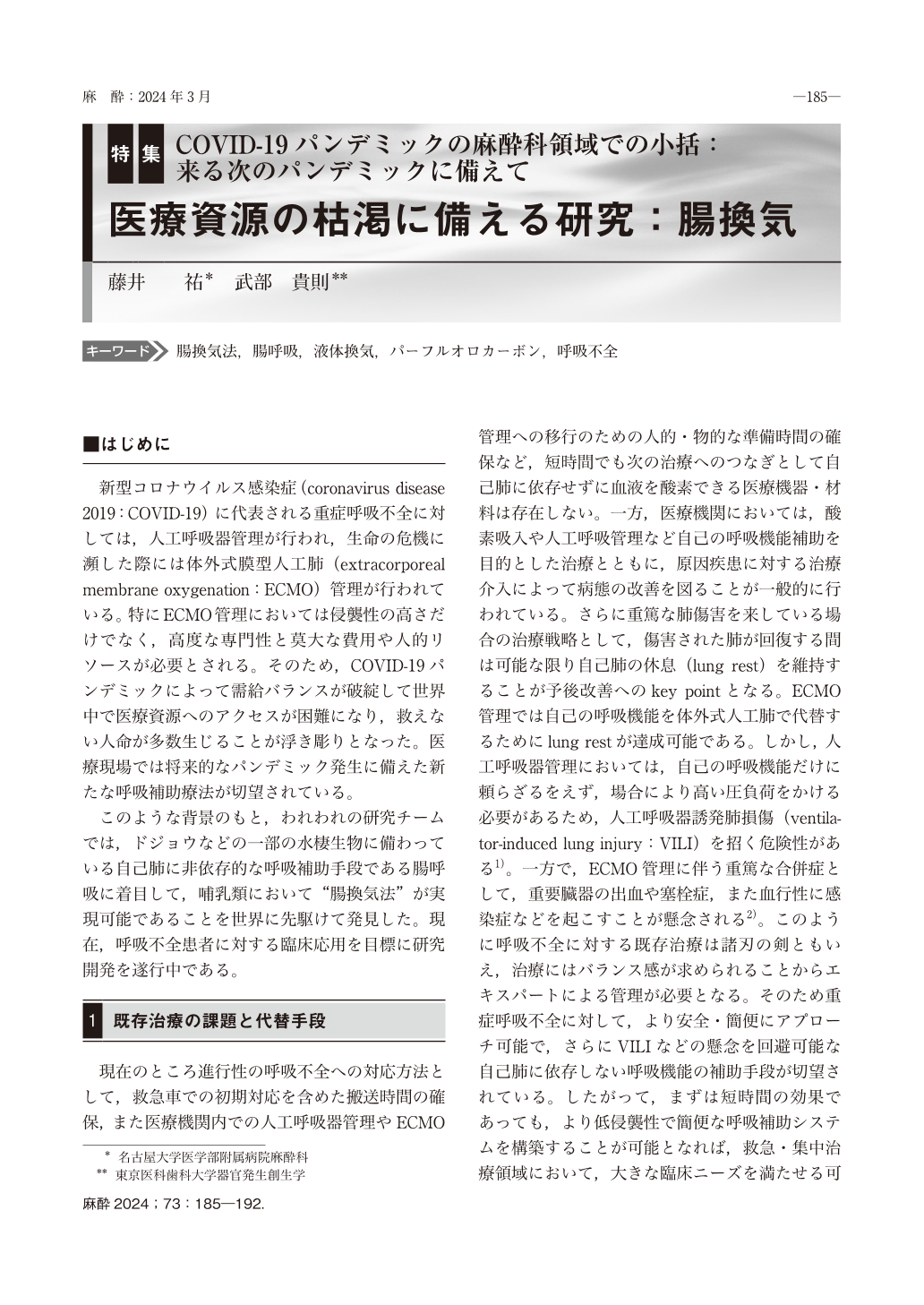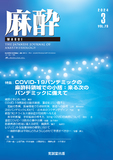Japanese
English
- 有料閲覧
- Abstract 文献概要
- 1ページ目 Look Inside
- 参考文献 Reference
はじめに
新型コロナウイルス感染症(coronavirus disease 2019:COVID-19)に代表される重症呼吸不全に対しては,人工呼吸器管理が行われ,生命の危機に瀕した際には体外式膜型人工肺(extracorporeal membrane oxygenation:ECMO)管理が行われている。特にECMO管理においては侵襲性の高さだけでなく,高度な専門性と莫大な費用や人的リソースが必要とされる。そのため,COVID-19パンデミックによって需給バランスが破綻して世界中で医療資源へのアクセスが困難になり,救えない人命が多数生じることが浮き彫りとなった。医療現場では将来的なパンデミック発生に備えた新たな呼吸補助療法が切望されている。
このような背景のもと,われわれの研究チームでは,ドジョウなどの一部の水棲生物に備わっている自己肺に非依存的な呼吸補助手段である腸呼吸に着目して,哺乳類において “腸換気法” が実現可能であることを世界に先駆けて発見した。現在,呼吸不全患者に対する臨床応用を目標に研究開発を遂行中である。
Severe respiratory failure often necessitates oxygenation support using ventilators or artificial lungs. However, the recent pandemic exposed the limited availability and accessibility of such devices, emphasizing the need for alternative respiratory support methods utilizing different organs. Drawing inspiration from the intestinal breathing mechanism observed in unique aquatic organisms like loaches, we investigated the potential of enteral ventilation in mammalian species. In our experimental studies, we delivered oxygenated perfluorodecalin intra-rectally to mice and pigs experiencing severe hypoxia while under controlled mechanical ventilation. Through longitudinal blood gas monitoring, we observed that enteral ventilation effectively oxygenated the animals by utilizing venous routes, thus preventing fatal respiratory failure. These findings represent the first experimental evidence supporting the concept of enteral ventilation and pave the way for further clinical development toward its application in humans. This article outlines the concept of enteral ventilation technology and discusses our ongoing translational efforts. Our goal is to develop a new, simpler, less invasive, and adjunctive method of oxygenation to address respiratory failure in humans.

Copyright © 2024 KOKUSEIDO CO., LTD. All Rights Reserved.


